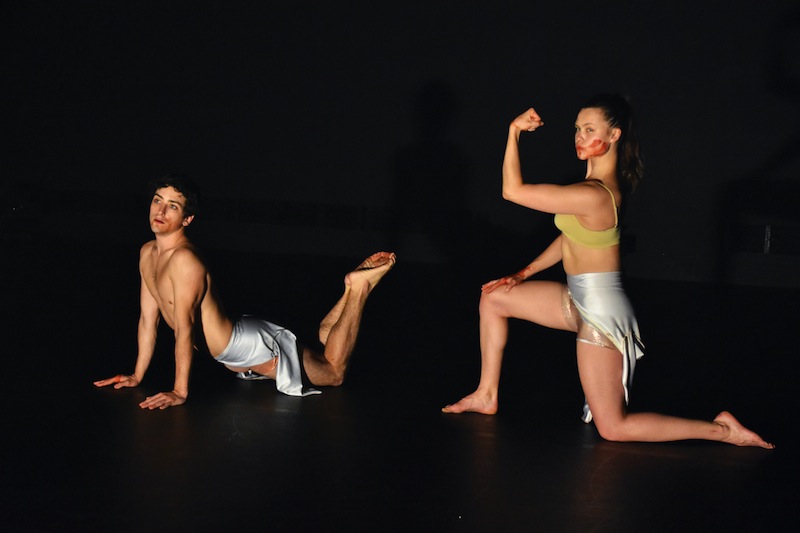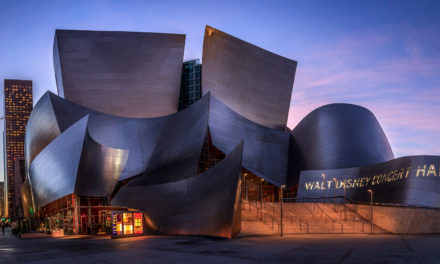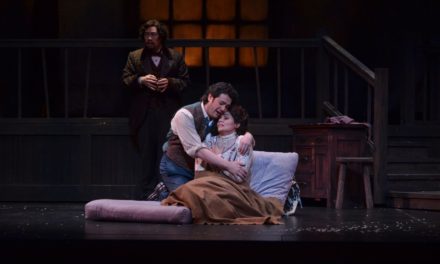 Contemporary dance performances are perhaps the most unpredictable events of all the performing arts. One never knows what to expect from the performers and choreographers, other than supremely toned bodies exhibited in costumes and clothing that push the boundaries of modesty and exhibitionism equally. In fact, it appears to this reviewer that the fashions of dancers would make for a great blog, book or paper topic for those, like me, who are intrigued by the nature of clothing and it’s contextually-specific relationships to the human body.
Contemporary dance performances are perhaps the most unpredictable events of all the performing arts. One never knows what to expect from the performers and choreographers, other than supremely toned bodies exhibited in costumes and clothing that push the boundaries of modesty and exhibitionism equally. In fact, it appears to this reviewer that the fashions of dancers would make for a great blog, book or paper topic for those, like me, who are intrigued by the nature of clothing and it’s contextually-specific relationships to the human body.
In James McGinn‘s Ing an Die, performed recently at the Arsht Center’s Carnival Studio Theater in Miami, the role of costumes was intriguingly partnered with a minimalist set and an exquisite curating of musical accompaniment. To speak of the secondary elements in Ing an Die is in no way an unflattering rendering of this lovely and opaque performance so rich in humour, love, passion and and wit.
 Mr. McGinn, the choreographer and lead dancer was paired with his fellow collaborator and close friend, Inga Huld Hákonardóttir, who gave an exceedingly electric performance of her own. While the two dancers seemed somewhat ill composed as a pair, with Mr. McGinn the very resplendant slim, sleek, and toned diminutive lead playing opposite the more robust and and curved (in a sexy and appealing way) Ms. Huld Hákonardóttir, there was no doubting the wonderful chemistry and commitment present in the three-part piece.
Mr. McGinn, the choreographer and lead dancer was paired with his fellow collaborator and close friend, Inga Huld Hákonardóttir, who gave an exceedingly electric performance of her own. While the two dancers seemed somewhat ill composed as a pair, with Mr. McGinn the very resplendant slim, sleek, and toned diminutive lead playing opposite the more robust and and curved (in a sexy and appealing way) Ms. Huld Hákonardóttir, there was no doubting the wonderful chemistry and commitment present in the three-part piece.
In a recent interview in Art Burst Miami Mr. McGinn explains the three part division of the overall performance:
In “Ing an Die”Act I is entitled Form, Act II is entitled Fiction, and Act III is entitled, Fate. Form critiques a kind of hyper-elitist sense of high art. Fiction deals with the fictions of life, social constructions, performative gender and mainstream commercial systems. Act III deals with time and asks the question: do we have to have these power systems? Why are we still arguing over all this when we are faced by such exponential conflict in the world, whether violence from global warming or events like mass shootings.
The trilogy of acts were of a unique identity that very loosely fused into one whole piece. Perhaps the most alluring and jarring element of artifices (and there are many in Ing an Die) was the sight of blood slowly dripping, then oozing quickly, from the mouths of each performer at the end of Act I.
While each dancer would change into new costumes for Act II, the traces of blood smeared on their faces and hands proved an especially vivid and memorable visual cue, a pointer or remembrance of the recent history of the performance, itself a kind of philosophical inquiry into the nature of loss, violence and proximal risks taking place when one dares to make that leap of passion.
It is situations, memories, and concepts like these that make Ing an Die a special event, one not easily classified as “contemporary dance.” Between the very heavily improvised third act and the utter commitment to dramatic tension subtly illuminated by comedic levity throughout, I can only speak for myself when I say that Mr. McGinn is a rare multi-layered talent, a dancer who authors works that transcend the simplistic notion of performance to enter into our collective imaginaries.



